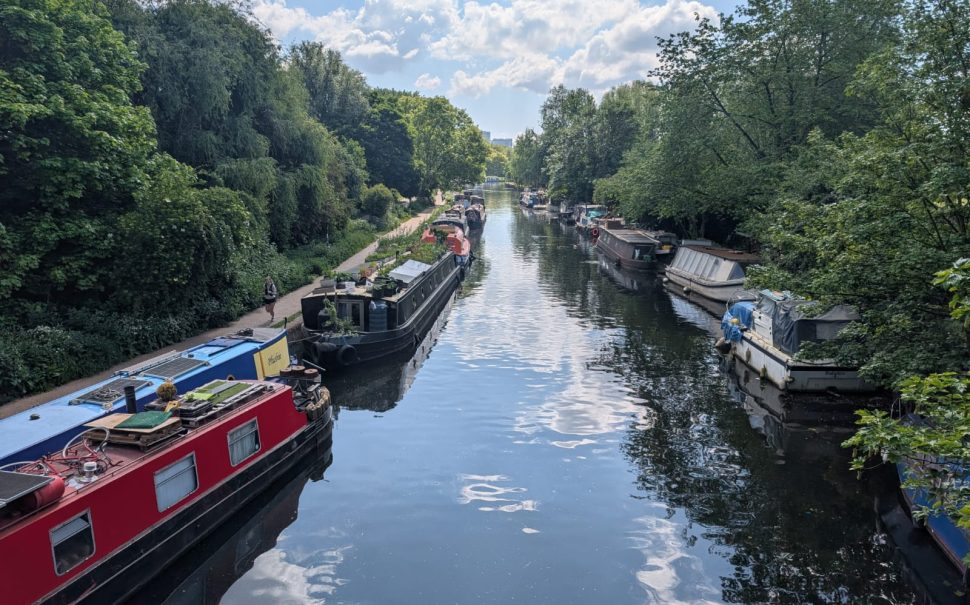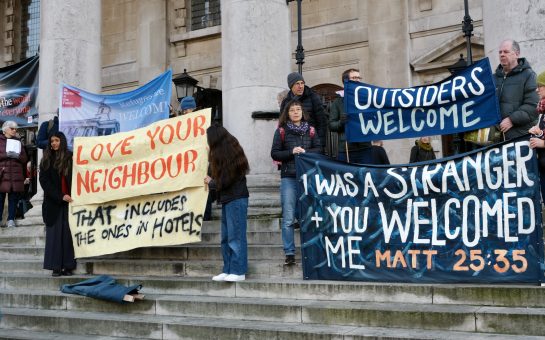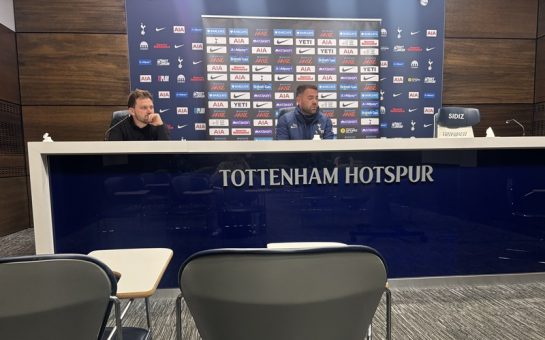Boaters in London struggle with punitive and unaccountable licence enforcement which causes them significant stress and erodes trust between boaters and the Canal and River Trust (CRT), according to new claims.
Boaters on a continuous cruiser licence type must move to a new place every 14 days in accordance with the Waterways Act 1995.
However, many boaters claim they still having their licences restricted by the CRT – the charitable trust which oversees the management of over 2,000 miles of the UK’s inland waterways – despite being compliant, including many in London.
Boaters reported a sense of “unavoidable punishment” in the context of what they regarded as predictive enforcement, and fear the approach may be part of a wider attempt to encourage continuous cruisers off the waterways due to the CRT facing an uncertain financial future.
One boater said: “It feels like we’re already guilty and have to prove ourselves innocent.”
Restricted licences
Six boaters on continuous cruiser licences spread across the London canals explained the issues they face.
The licences, offered by the CRT, enable boat owners to moor in any appropriate and available spot on the trust’s waterways for a maximum of 14 days.
The terms of the licence are an interpretation of the British Waterways Act 1995, which states that owners must use the boat for “bona fide (in good faith) navigation […] without remaining continuously in one place for more than 14 days”.
The act states owners have the responsibility to make the CRT aware of their movements, but the trust also keep their own record of the movement of all boats on their waterways, which they aim to cover every 14 days.
With reference to these sightings, the CRT may begin enforcement if they have a clear impression of limited movement.
The first step in enforcement is to place non-compliant boaters on a six-month restricted licence, which removes the opportunity of buying a 12-month licence while placing the boater in a position of effective probation.
After this, a full-licence is restored if they can provide evidence of sufficient movement.

Failure to satisfy the CRT of sufficient movement during a restricted licence could lead to further enforcement and, ultimately, removal of the boat from the water.
An FOI request revealed that the trust removed 101 boats from its waterways in 2024.
Boaters’ claims
All boaters spoken to had been issued with restricted licences and none of them wished to be identified through fear of reprisal.
A number claimed that they were issued with six-month licences despite “patchy or incomplete sightings” recorded by the CRT.
One boater had only been sighted four times over a period of six months, including a period of almost three months when no sightings were recorded at all.

The National Bargee and Travellers Association (NBTA) London lead caseworker and chair Ian McDowell said: “Particularly in London, CRT’s data is so spotty, so whole bits of cruising are totally missing from the data record.
“They then use that to say you haven’t done enough this year.”
The boaters claimed communication with the CRT to rectify or contest restricted licences was met with refusal or, for a few, the CRT were entirely unresponsive.
One boater described CRT’s communication as “faceless”.

A CRT spokesperson said: “Our sightings are thorough but, inevitably, there are some occasions where a boat’s movement mean we may miss the odd sighting.
“Although, over the licence period, we generally have enough sightings to accurately show a cruising pattern.
“We don’t view a six-month licence as a punishment – it is offered at a pro-rata cost – and is an opportunity to focus on what is needed to get the boater cruising in line with our guidance.
“Provided that the boater cruises in line with our guidance, they will be able to relicense for 12 months as normal afterwards.”
The CRT say boaters are unable to appeal licence restrictions because the restriction is not considered a penalty, and boaters with evidence to prove sufficient movement are de-restricted after the six-month restriction expires.
Despite this, two boaters claimed the CRT either ignored evidence presented, or closed the boater’s case when they sent pictures and information to evidence their movement.
One boater said: “Initially, I couldn’t even get the Licence Support Team to tell me why my licence had been restricted.
“After a series of emails back and fourth, in which their position changed each time, I provided additional evidence, I finally sent them a full set of geolocated photos filling in all the gaps in their data. I never heard from them again.
“It was only after another team overturned the decision and reinstated my full licence that I learned my case had been closed without notice.”
The CRT spokesperson said they cannot comment on specific cases.
Predictive enforcement?
The boaters interviewed disagree with the CRT’s claim a restricted licence is not a punishment.
Emails notifying boaters of their licence restriction threaten court action to remove boats from the waterways if boaters do not accept, find a home mooring, or remove their boat from CRT waterways.
Some boaters explained the threat of losing their home severely impacted their mental health, and say the threat shows a lack of regard for boats as homes.
One boater said: “There is a complete unwillingness to recognise that there is more than a financial and logistical argument here.
“These are people’s homes, you are messing with people’s homes. That is a very stressful thing to do.”
Spurred by London’s rental crisis, the number of continuous cruisers has risen 252% in the capital since 2012 – the year the CRT was formed from the dissolution of public corporation British Waterways.
A CRT spokesperson said: “The massive increase in boat numbers has put an unprecedented amount of pressure on facilities.
“More boats using them means they get full quicker and are at more risk of breaking down.
“Boats without home moorings in London are almost entirely used as permanent homes, hence by nature they make more use of facilities, towpath moorings and infrastructure.”
The CRT used this argument in 2024 to justify implementing a surcharge of 20% on top of licence fees for continuous cruising boats, with boats on a home mooring unaffected.
The surcharge will rise to 75% by 2028.
Many on the canals fiercely oppose this surcharge and see this measure as part of a wider attempt by the CRT to encourage continuous cruisers off the water altogether by making cruising more expensive and harder to sustain.
Since 2023, the CRT have reconfigured some areas previously available to continuous cruisers as pre-bookable and chargeable moorings, on the grounds that they would provide more moorings for boats visiting the city from outside London.
An FOI request revealed only 17% of the available nights for these moorings were booked.
This year, the CRT commissioned an independent review of the legal structure surrounding boat licencing, with results expected in the autumn.
The terms of reference for this review claim a significant increase in continuous cruisers in the past 30 years has led to challenges for the Trust from an operational, financial and reputational perspective.
It continued: “A significant and growing number of those boats licensed as a continuous cruiser cannot reasonably be said to be genuinely navigating throughout their licence period and, instead, remain in one relatively small part of the network for most if not all of the time, to live and work in that area without obtaining a home mooring.”
It also claimed: “The current legislation predates the Human Rights Act 1998 and the Equality Act 2010 which both have significant implications for the trust’s boat licencing and enforcement approach, particularly in relation to continuous cruisers and residential vessels.”
A CRT spokesperson said: “We welcome all boats and boaters onto our canals as we work to keep the network open and safe.
“This includes raising the money needed to look after our canals and interpreting the law so that canals are available to all.
“We try to keep boating affordable – the average licence costs around £1,000 a year – with those that use the network most asked to pay slightly more.
“We do all we can to help those who are struggling to stay on the water and each year our welfare team supports hundreds of vulnerable boaters who are facing difficulties.
“The current commission is independently-led and we don’t know what, if any, changes it might recommend. We’ve already announced our licence fee structure up until 2028, and this won’t be affected.
“The commission is speaking to boaters, so people can share their views. The canals have never been busier and it’s our charity’s job to manage them fairly for all, including for those living afloat. This means interpreting and applying legislation that dates back many decades.
“Some boaters tell us that the legislation doesn’t go far enough, whilst others believe there shouldn’t be any regulation of boater activity at all. So, without prejudging what the commission will conclude, this is one area that it will consider over the months ahead.”
In May, the CRT appointed new chief executive Rob Campbell, whose professional experience is based in homelessness, housing and welfare.
In the context of this review, boaters are concerned restricted licences are being used as means to pre-emptively police non-compliance.
One boater said: “It seems people who have been on the water for several years are being given restricted licences to make them scared and to keep them moving.”
The NBTA’s McDowell said: “CRT seem to be trying their hand at putting people into the enforcement system.
“If people are savvy and they push back, they’re quite often given 12 month again.”
One boater suggested an increase in boats on restricted licences could favour the CRT in licencing data analysed by the independent review.
The CRT said: “We only restrict our licence offers where the person reviewing the cruising pattern has sufficient information, and things like stoppages, approved extended stays, navigation restrictions, and any evidence of additional cruising will all be considered so we make a fair decision.”
Financial uncertainty
The trust receives annual government support through a 2012 agreement with Defra, but this grant, totalling £52.6million in 2024, has declined in real terms since the previous inflation linking ended in 2021/22 and was due to expire in 2027.
An extension proposed in 2023 reduces levels of support even further, pushing the CRT to increase income from alternative sources and reduce their reliance on taxpayer funding.
Boat licences make up 12% of CRT’s revenue, and the trust have sought in recent years to tighten enforcement.
A recent LinkedIn post advertising a Licencing Ranger position in the Trust included: “Licensing, Compliance, and Enforcement are committed to returning to a boat licensing rate of at least 95% by 2028.
“The Trust has around 35,000 boats on its waters, with around 7,600 of those boats ‘continuously cruising’ and needing to meet the additional requirements for a boat without a home mooring.”
An FOI request to the Trust found that 990 restricted licences were issued in 2024.
But the boaters spoken to suggest well-intentioned and compliant boaters are being wrongly caught in this enforcement approach, leading to mounting resentment and a loss of trust.
One boater said: “Through mismanagement in enforcement, the CRT are eroding trust.”
This is important, she claims, as the ‘in good faith’ navigation requirement is based on mutual trust.
Another said: “I was ready to be collaborative with the CRT and now I’ve slightly lost energy for that.”
A CRT spokesperson said: “We try to manage the waterspace in London so it’s shared fairly between all types of boat user, not to mention the millions who visit the towpaths, and all the nature that makes its home on our canals.
“As you can imagine, it’s a challenge, and we aren’t always able to please everybody.”
One boater said: “The experience of being a continuous cruiser for me is of the walls closing in from all sides in ways that affect the day-to-day feasibility of my life.”
Feature image: Adam Termote





Join the discussion